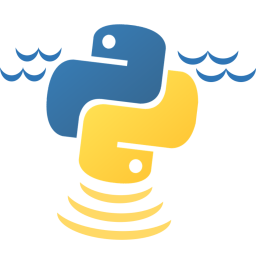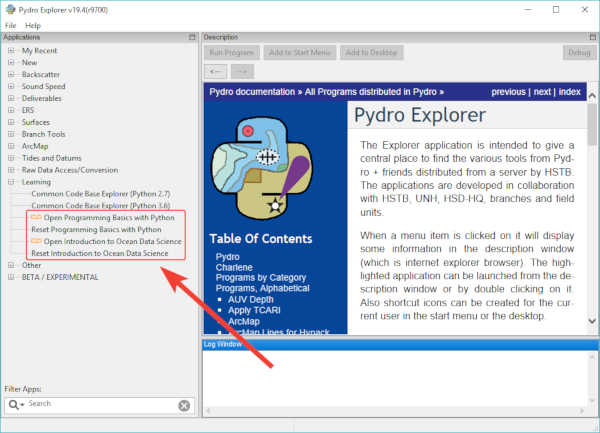
2. How to Access the Notebooks¶
The e-learning Python for Ocean Mapping (ePOM) notebooks can be accessed in the three alternative ways:
By installing NOAA Pydro (Windows-only).
By cloning the ePOM’s GitHub repositories.
2.1. Access to the CCOM/JHC ePOM Servers¶
This option relies on the CCOM/JHC ePOM servers. It is the easiest way to obtain access to the ePOM notebooks. You only need:
An updated, modern browser (e.g., Mozilla Firefox, Google Chrome, Apple Safari).
An Internet connection.
The CCOM/JHC ePOM servers are configured with a Python environment that has JupyterHub and all the required packages to run the notebooks. In order to access the CCOM/JHC ePOM servers, you need an username. For obtaining an username, write to epom@ccom.unh.edu.
Once obtained the username, read the following instructions:
2.2. Installation of NOAA Pydro¶
NOAA Pydro is a free suite of open-source software tools used to support hydrography and cartography. You can download the NOAA Pydro installers from the NOAA Pydro download page. Pydro only works on Windows.
To have a full NOAA Pydro installation, download the following two files into the same folder, then run the PydroSetup installer. It will automatically find and install the PydroSupplemental installer.
The ePOM notebooks are part of NOAA Pydro. Once that you have installed NOAA Pydro, you can access the notebooks through a menu entry in Pydro Explorer (Fig. 2.1).

Fig. 2.1 The Programming Basics with Python menu entry in Pydro Explorer.¶
Pydro Explorer also provides the option to remove all the applied changes and thus restore the initial notebooks.
2.3. Cloning the GitHub Repositories¶
This third option assumes some previous knowledge on how to use git and create a NOAA Pydro environment.
A common use case for this option is the willingness to contribute to the ePOM project by proposing improvements.
You can access (and clone) the ePOM’s GitHub repositories at the following urls: